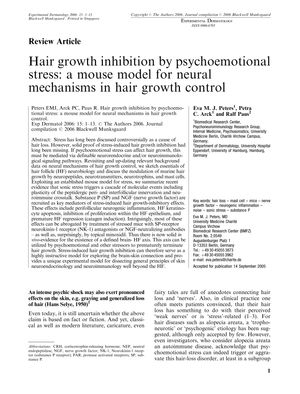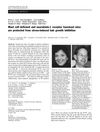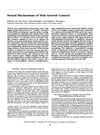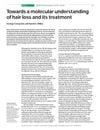Hair Growth Inhibition by Psychoemotional Stress: A Mouse Model for Neural Mechanisms in Hair Growth Control
December 2005
in “
Experimental Dermatology
”
psychoemotional stress neuroendocrine pathways neuroimmunological pathways Substance P nerve growth factor neurogenic inflammation keratinocyte apoptosis hair follicle regression SP-receptor antagonists NGF-neutralizing antibodies minoxidil brain-hair follicle axis neuroimmune interactions stress-reducing therapies SP NGF Rogaine

TLDR Stress can stop hair growth in mice, and treatments can reverse this effect.
The document from 2005 presents a study that demonstrates how psychoemotional stress can inhibit hair growth in mice through neuroendocrine and neuroimmunological pathways. The study identifies Substance P (SP) and nerve growth factor (NGF) as key mediators in this process, causing neurogenic inflammation, keratinocyte apoptosis, and premature hair follicle regression. It also shows that these stress effects can be reversed with specific treatments, such as SP-receptor antagonists, NGF-neutralizing antibodies, or minoxidil. The findings suggest a brain-hair follicle axis influenced by stress and offer a potential therapeutic target for stress-induced hair loss. The study also calls for further research into the neuroimmune interactions in the skin and the potential for stress-reducing therapies to treat hair loss conditions.









